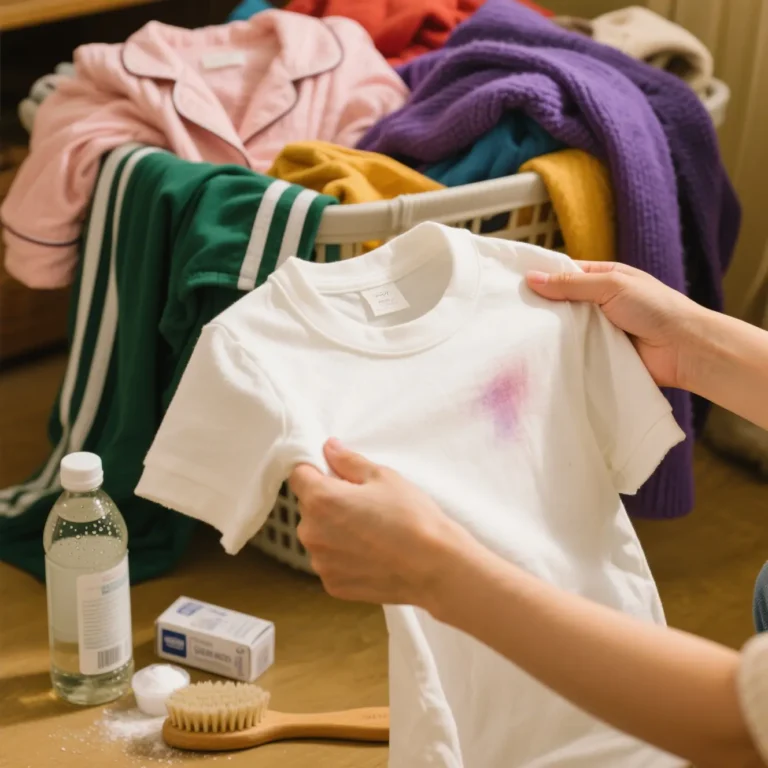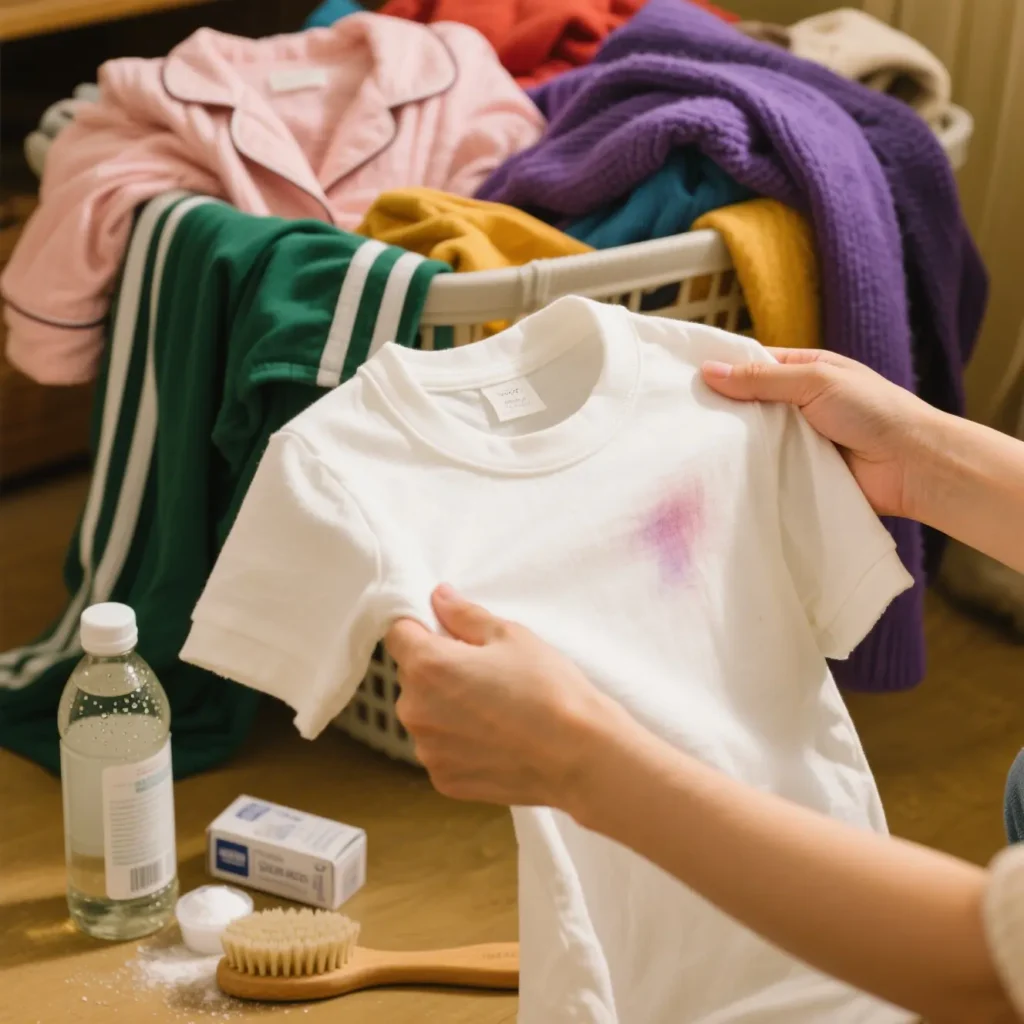Physical Address
304 North Cardinal St.
Dorchester Center, MA 02124
Physical Address
304 North Cardinal St.
Dorchester Center, MA 02124


In the tapestry of daily life, the accidental dyeing of beloved clothes can be a truly vexing issue. A once vividly colored and comfortably worn garment instantly loses its original allure when marred by foreign hues, and may even face the unfortunate fate of being discarded. However, armed with the correct knowledge and practical restoration techniques, these “injured” clothes can be revived to their former glory. In this comprehensive guide, we will delve deep into the world of clothing dyeing, exploring the common causes, effective restoration methods for different materials, and essential preventive measures.
With the advent of washing machines as essential household appliances, the practice of mixed washing has become increasingly prevalent. However, this convenience comes with a hidden risk. When faded clothes are laundered alongside others, the likelihood of dye transfer is significantly increased. For instance, consider the ill-fated combination of a red cotton T-shirt and a white linen shirt. The cotton T-shirt, when soaked in water, releases dye molecules that readily attach themselves to the fibers of the nearby shirt, resulting in unsightly red stains.
The degree of dyeing is also influenced by the material of the clothing. Natural fiber materials such as cotton, linen, and silk are more porous and thus more prone to absorbing foreign dyes compared to synthetic materials like polyester. This porosity allows the dye molecules to penetrate deeper into the fibers, making the dyeing more difficult to reverse.
The storage environment of clothing plays a crucial role in maintaining its color integrity. When clothes are left in a damp, dark place for extended periods, or when placed in close proximity to fading items, the stage is set for dyeing to occur. Take, for example, the case of newly purchased faded jeans hung in the same closet as other garments. Over time, the indigo dye from the jeans can slowly leach onto neighboring clothes, leaving behind telltale blue marks.
Certain materials are also more prone to fading during storage. Fabrics like denim, which rely on reactive dyes for their colorfastness, can experience significant color loss when exposed to light, heat, or humidity. This fading not only affects the jeans themselves but can also transfer to adjacent clothes, leading to unwanted dyeing.
In our daily adventures, we often encounter substances that can wreak havoc on our clothing. Whether it’s the juice of a freshly sliced fruit that accidentally splashes onto our shirt or the ink from a pen that leaks during a busy day, these seemingly innocent encounters can result in stubborn stains and dyeing. The pigments in fruit juices, such as the anthocyanins in berries or the carotenoids in citrus fruits, are highly reactive and can penetrate deep into the fabric fibers if not promptly addressed.
Similarly, the inks used in markers and pens are formulated to be highly pigmented and long-lasting, making them particularly difficult to remove once they have stained clothing. Even during home improvement projects, substances like paint and varnish can pose a threat. A simple brushstroke gone wrong or a splatter from a paint can can leave behind a permanent mark on our favorite clothes.
Cotton, a staple in many wardrobes, can be restored after dyeing using a simple and readily available household item: white vinegar. Begin by preparing a solution of warm water and white vinegar in a ratio of approximately 1:10. Submerge the dyed cotton garment in this solution and let it soak for 30 minutes to an hour. The acidic properties of the vinegar work to break down the dye molecules, loosening their grip on the fabric fibers.
After the soaking period, gently rub the stained area to further encourage the removal of the dye. Rinse the garment thoroughly with clean water to remove any remaining vinegar and dye residue. For more stubborn stains, the process can be repeated, or a professional cotton clothing stain remover can be used, following the manufacturer’s instructions carefully.
Silk, with its delicate texture and luxurious feel, requires a more gentle approach when dealing with staining issues. For slightly stained silk garments, a mild shampoo can be an effective remedy. Dilute the shampoo in warm water and, using a soft cloth or sponge, gently dab and rub the stained area. It’s important to be extremely gentle to avoid damaging the delicate silk fibers, which can be easily frayed or abraded.
Once the stain has been treated, rinse the garment thoroughly with clean water and blot it dry with a clean towel. Avoid wringing or twisting the silk, as this can cause permanent damage to the fabric. Instead, allow it to air dry naturally in a shaded area, away from direct sunlight, which can fade the color of the silk over time.
For more severe staining, it’s advisable to entrust the garment to a professional dry cleaner. These experts have access to specialized dye reducing agents formulated specifically for silk materials. Using their expertise and advanced equipment, they can carefully restore the color of the silk without compromising its integrity.
Chemical fiber clothing, such as polyester or nylon, can be restored using baking soda. Dissolve an appropriate amount of baking soda in warm water and soak the dyed garment in this solution for 1-2 hours. Baking soda, with its mild alkaline properties, helps to break down the dye molecules and lift them from the fabric.
After soaking, rinse the garment thoroughly with clean water. If the dyeing persists, a soft brush can be used to gently scrub the stained area, taking care not to apply too much pressure, as this can damage the surface of the fabric. Another option is to use color bleach, but it’s crucial to test it on an inconspicuous part of the garment first to ensure that it doesn’t cause any further damage to the color or fabric.
Measures to Prevent Clothing from Being Dyed
One of the simplest and most effective ways to prevent clothing from being dyed is to practice classification washing. Separate dark clothes from light clothes, and always wash faded clothes separately. This can be easily achieved by using laundry bags of different colors. Place clothes that are prone to fading, such as new jeans or brightly colored tops, into a dark-colored laundry bag before placing them in the washing machine. This acts as a barrier, preventing the dye from migrating to other clothes.
It’s also important to consider the material of the clothes when washing. Different materials have different washing requirements and tolerances. Cotton clothes, for example, can withstand more agitation and higher temperatures, while silk and wool require gentle cycles and lower temperatures. By washing clothes according to their material, you can not only prevent dyeing but also extend the lifespan of your garments.
Proper storage is key to maintaining the integrity of your clothes and preventing dyeing. Ensure that your wardrobe is dry, well-ventilated, and free from excessive humidity. For clothes that are prone to fading, consider storing them in a sealed plastic bag or garment cover. This creates a barrier between the fading garment and others in the wardrobe, reducing the risk of dye transfer.
Adding desiccants, such as silica gel packets, to your wardrobe can help absorb excess moisture, while mothballs or cedar chips can deter pests. Moisture and pests can both cause damage to the color and fabric of your clothes, making them more susceptible to staining and dyeing.
When it comes to preventing clothing from being dyed, time is of the essence. As soon as a stain occurs, it’s important to take immediate action. Start by blotting the stain gently with a clean, damp cloth. Avoid rubbing the stain, as this can push the dye deeper into the fabric. If the stain is still visible, a pre-treatment product specifically designed for the type of stain can be used. For example, a fruit juice stain can be treated with a stain remover containing enzymes that break down the pigments.
Follow the instructions on the pre-treatment product carefully, and then wash the garment as usual. By addressing stains promptly, you can often prevent them from setting and becoming permanent, thus reducing the risk of dyeing.
When faced with severe dyeing that seems insurmountable, don’t despair. Professional laundry and dry cleaning shops are equipped with the expertise and tools to handle even the most challenging cases. These professionals have a deep understanding of different fabric types and dyeing processes, allowing them to select the most appropriate treatment method.
Using specialized dye reduction technologies and products, they can often restore a severely dyed garment to its former glory. While this may come at a cost, it’s a small price to pay compared to the value of a beloved piece of clothing.